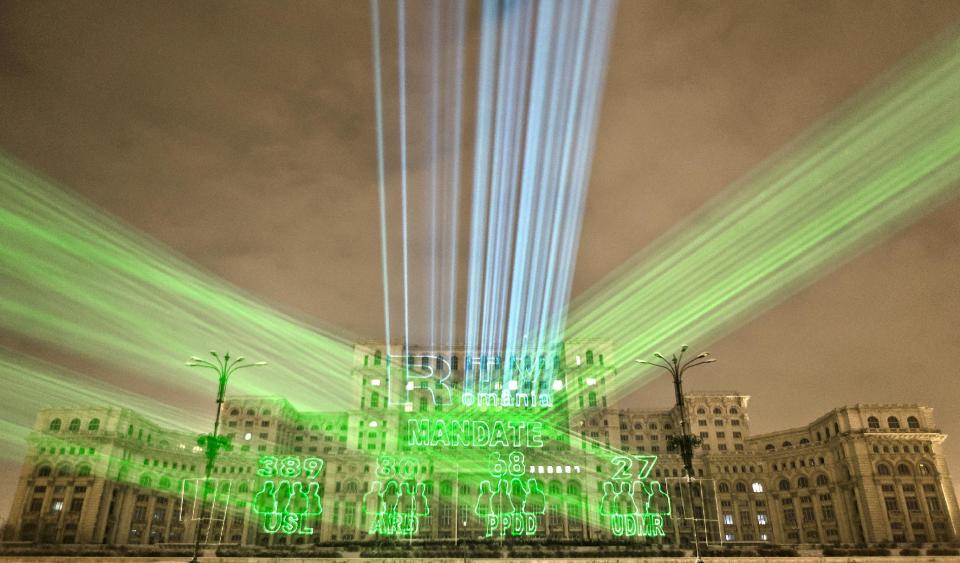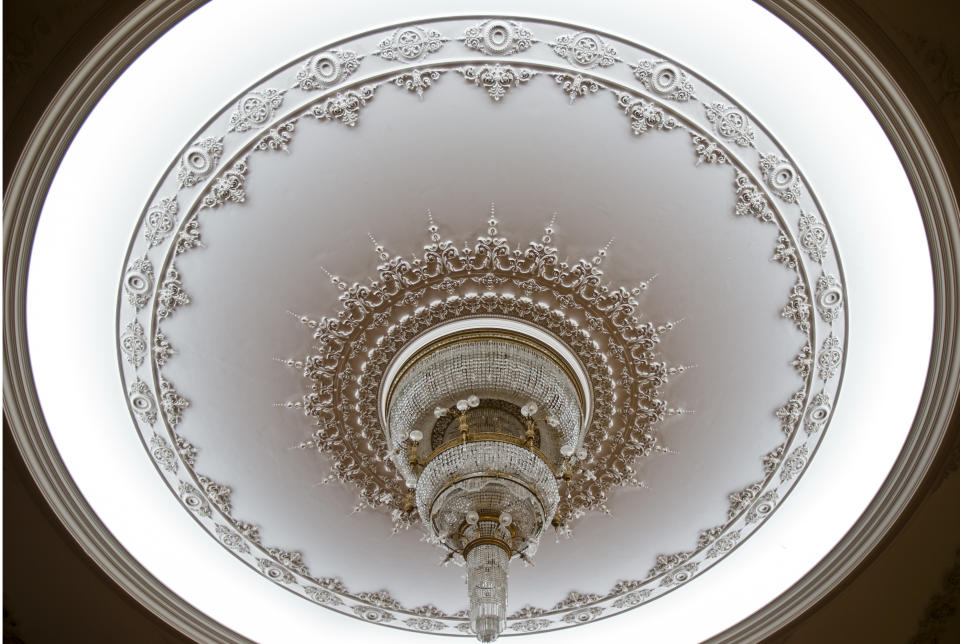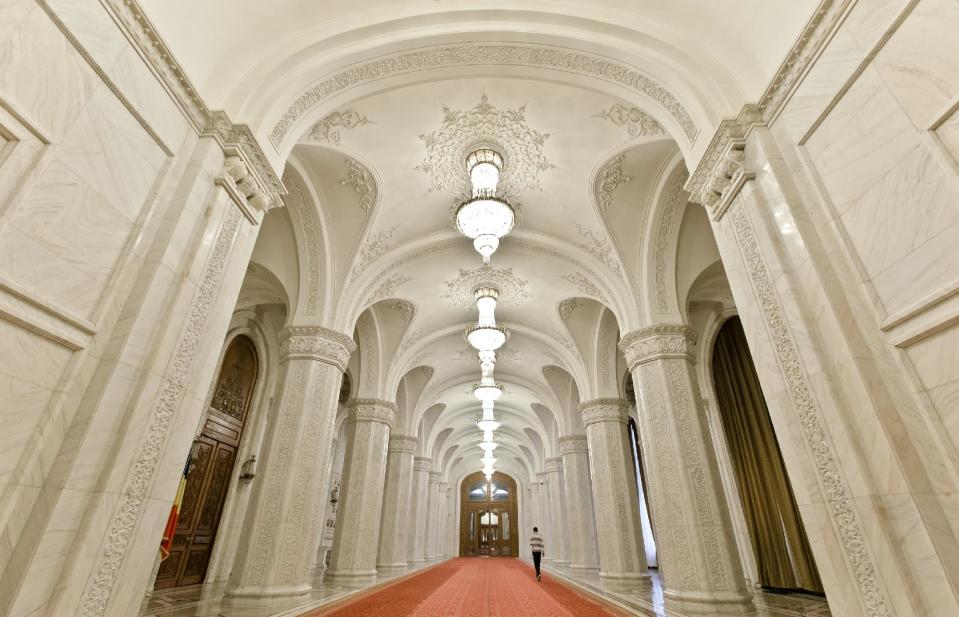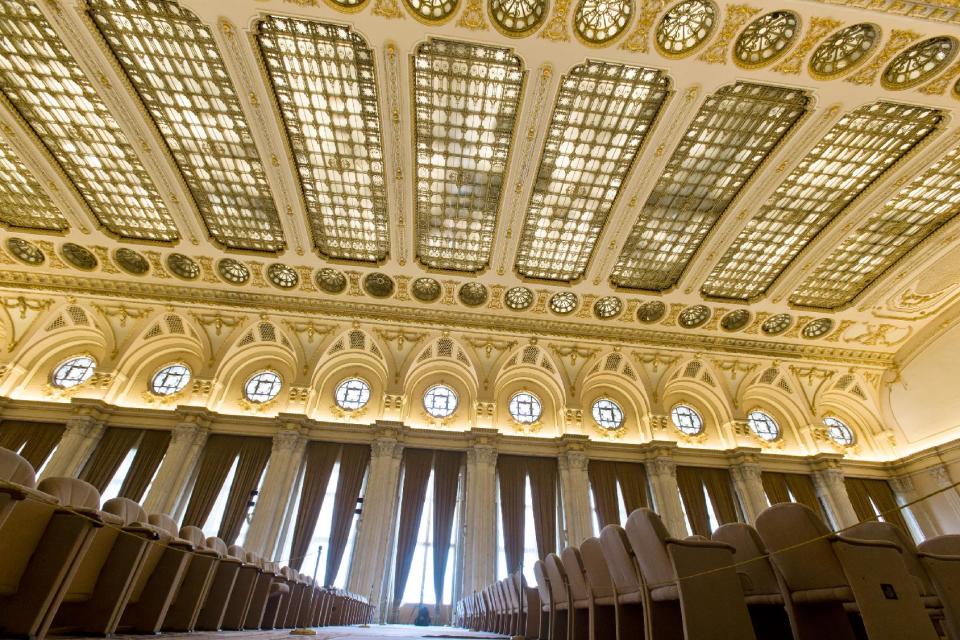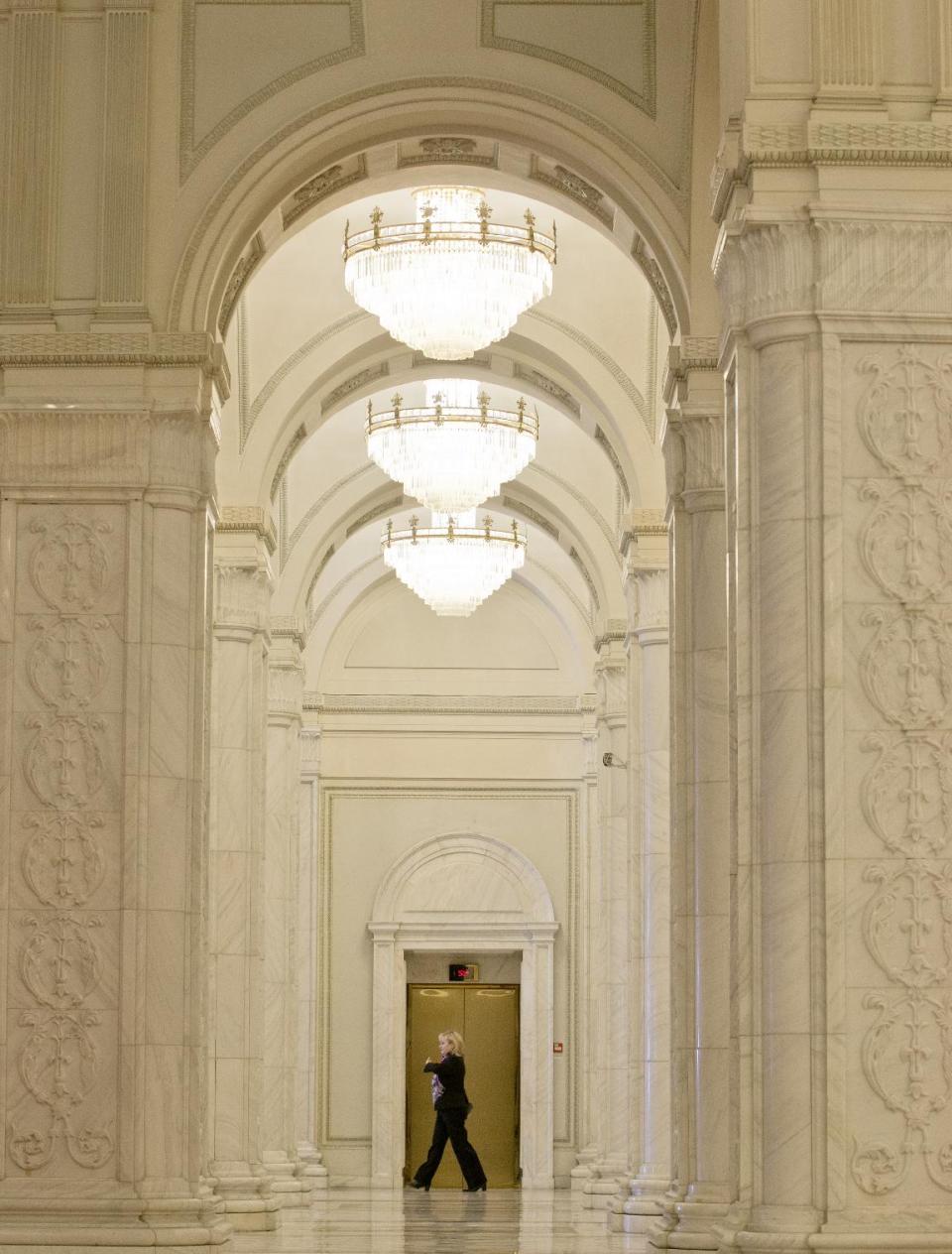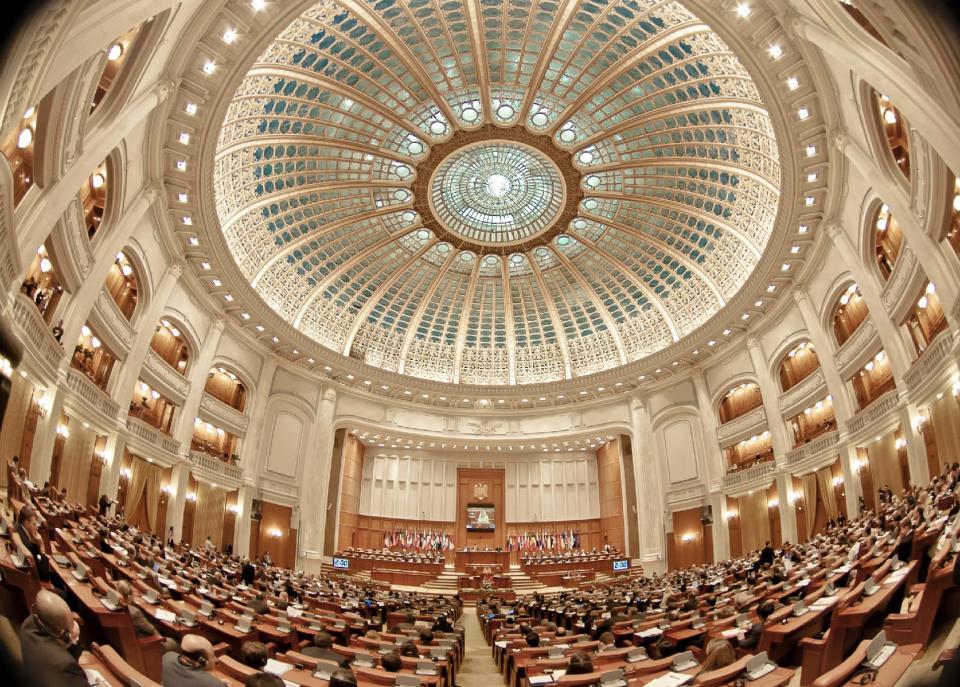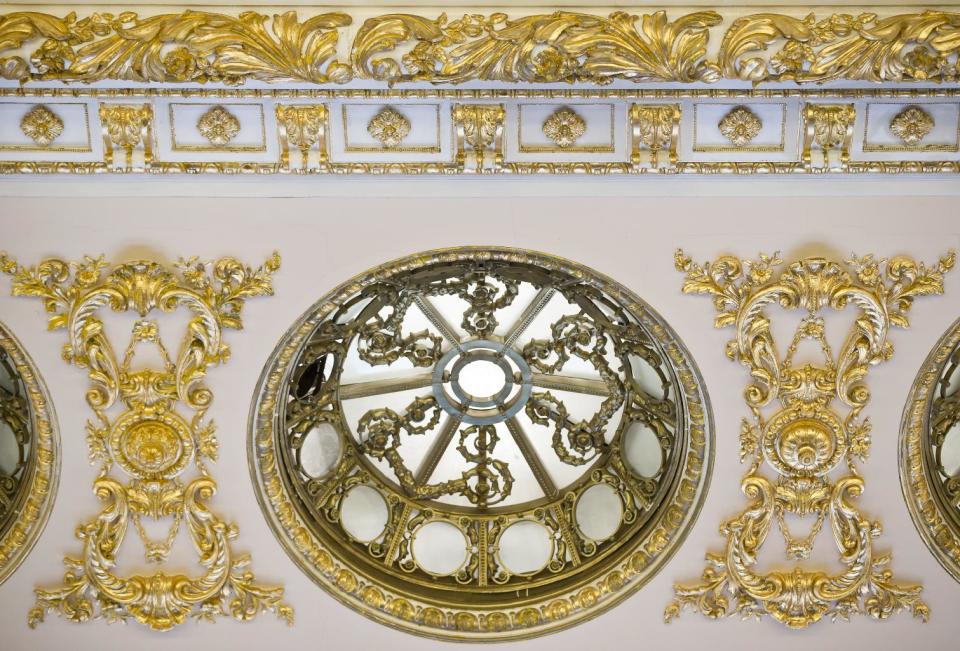Communist palace draws pop stars and presidents
BUCHAREST, Romania (AP) — Twenty-three years after communism collapsed, the Palace of the Parliament, a gargantuan Stalinist symbol and the most concrete legacy of ex-dictator Nicolae Ceausescu, has emerged as an unlikely pillar of Romania's nascent democracy.
And while it remains one of the most controversial projects of Ceausescu's 25-year rule — albeit one that has gradually found a place in the nation's psyche — it's also now a tourist attraction, visited by tens of thousands of Romanians and foreigners every year.
The palace, so big it can be seen from space, tentatively opened its doors in early 1990 when Romanians were still raw from the trauma of communism. Described by some as a giant Stalinist wedding cake, it's the world's second-largest administrative building after the Pentagon, at 350,000 square meters (3.77 million square feet).
Parliament and the Constitutional Court are housed inside, along with the South-East European Law Enforcement Center, which fights crime, smuggling and fraud-fighting. Just days before Christmas, Parliament members met inside to vote on a new government. But over time the palace has become as much a magnet for glamorous events and celebrity photo-ops as it is a site for government affairs.
Brides pose in front of the yellow-stoned facade, while weddings, balls, movies and fashion shows and shoots take place inside. It's hosted celebrities — Michael Jackson moonwalked in front of the building after a press conference, Colombian pop star Shakira sang outside in the pouring rain, and Hollywood actor Ethan Hawke attending a ball there to raise money for disadvantaged children. Visiting politicians have included former U.S. President George Bush, Russia's Vladimir Putin, and in October, German chancellor Angela Merkel, who made a speech to 16 European prime ministers.
On his 90th birthday in October 2011, former King Michael attended his first Parliament sitting there in six decades, calling on Romanians to continue to build democracy. British TV producers even drove cars in the palace's underground tunnels to show how cavernous it was."
Construction on the grandiose project began in the early 1980s, when food rationing and power cuts were common. Some 9,000 homes were demolished, residents were given just days to vacate their homes, churches and synagogues were razed or moved, and two mountains of marble were hacked down for the 84-meter (275-foot) high palace to be built.
Ceausescu designed the palace to house the government and Parliament after the devastating earthquake of 1977 where swaths of buildings crumbled in the capital and more than1,500 people died. A semi-literate son of a peasant, Ceausescu was nothing if not ambitious: He wanted the new building to withstand any earthquake and last 500 years.
A million Romanians, including thousands of soldiers, were enlisted to work around the clock on the construction, painstakingly carving huge oak, elm and cherry doors and sculpting giant crystal chandeliers for marble rooms almost as big as athletic fields. Today's tours sample only parts of the building and last just one to two hours, but it would take a day to visit all the rooms and almost an hour just to walk around the perimeter.
The palace is perched atop a man-made hill at the end of the United Nations' boulevard that is deliberately one-meter (yard) wider than Paris' famous Champs Elysees. Outside, the European Union, NATO and Romanian flags flutter.
Anca Petrescu, who was appointed chief architect of the project in 1978, recalled Ceausescu visiting one day, looking at some columns inside the building, and saying, "Those flowers decorating the columns are not equal."
"I never noticed that," Petrescu recalled. "I was exhausted and the others were petrified." The men in his entourage assured Ceausescu that the columns were identical, and Petrescu added, "We all swore that it was ok." But he ordered someone to climb a ladder and measure them, and determined that one flower "was one centimeter (half an inch) shorter than the others. We could not believe our ears."
Petrescu insists that Buckingham Palace and Versailles were her artistic inspirations, not North Korean architecture, even though Ceausescu sent architects on a visit to Pyongyang to study architecture there after he was inspired during a 1971 visit. She says it's neo-classic in in style, while others diplomatically call the style "eclectic."
"This building ended up such big due to a technical reason," she insisted. "There were supposed to be three big institutions in here: the presidency, the executive and the legislative corps, and round the back that's where the protocol and reception section were meant to be. It's basically a mega city that's why it's this large."
She said that if Ceausescu — who was tried and executed Dec. 25, 1989 — were alive to see what had become of it, he "would make the sign of the cross" — a Romanian expression that means he'd be horrified.
But Valentina Lupan, one of 2,000 architects who worked on the project says Ceausescu "was demented. Why did he want the biggest building? Like Hitler, like Mussolini, dictators love architects. Trust me on this. They, the dictators, imagine themselves as architects of the new world."
Tourists tend to rave about the sheer scale of the building rather than the architectural beauty.
"The inside is fabulous," said Dean Edgar, a resident British businessman. "You have no idea the immense size of the rooms inside, there's marble everywhere, ornate furnishing, ornate tapestry, truly an incredible building. I don t think it's particular pretty but it's big, it's impressive." '
___
If You Go...
CEAUSESCU'S PALACE: Bucharest, Romania, http://www.palatulparlamentului.ro . Open daily 10 a.m.-4 p.m. (last admission 3:30 p.m). Admission between $10 and $15 for a guided tour. (Price varies depending on how long and complex the tour is; check in advance as not all tours are available every day or year-round.) Tours are offered in English, French, German, Italian, Spanish and Romanian and last up to two hours. Maximum group size is 25.
GETTING THERE: 15 miles (25 kilometers) from. Bucharest airport.
HOTELS: Most foreign visitors stay at the Ceausescu-built hotel behind the palace, now a Marriott, called The Grand, http://www.grandhotel.ro or via http://www.marriot.com .

